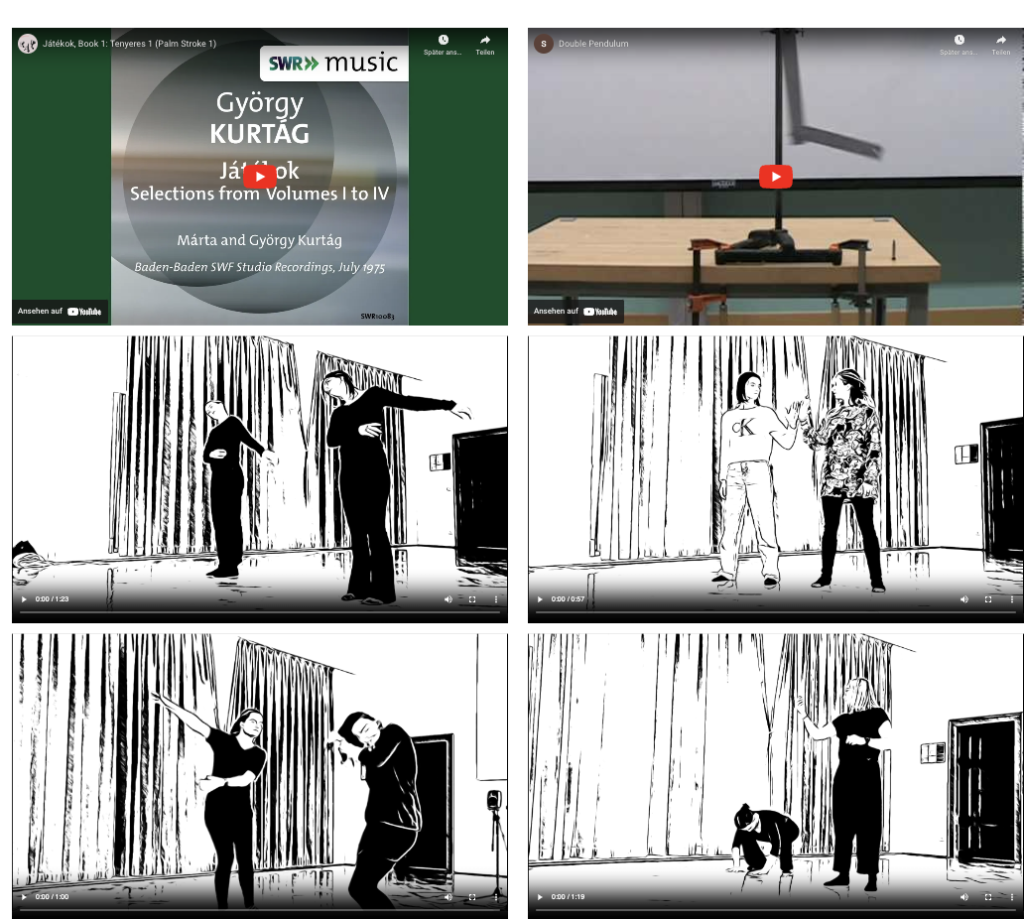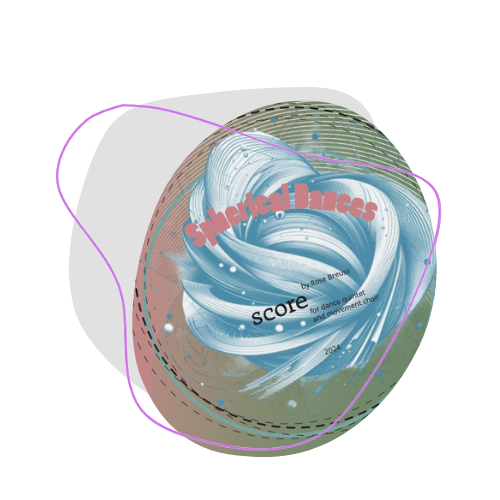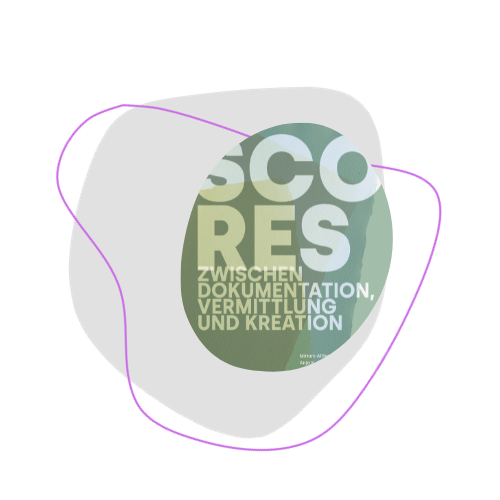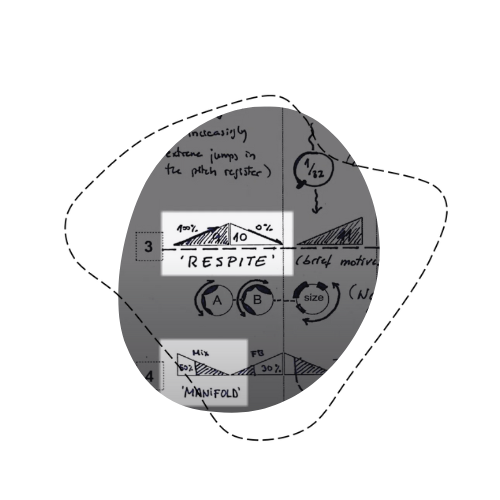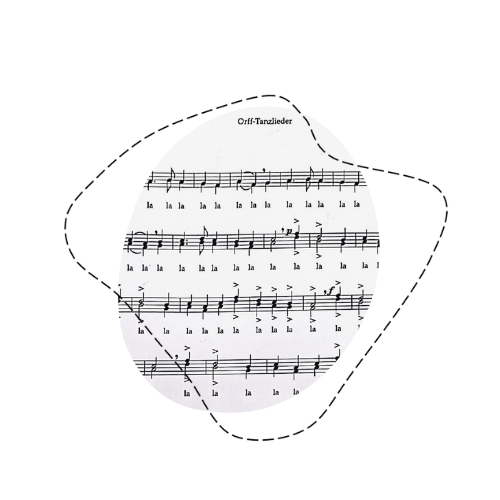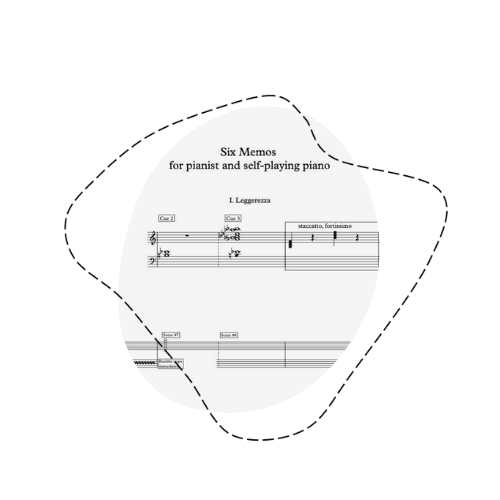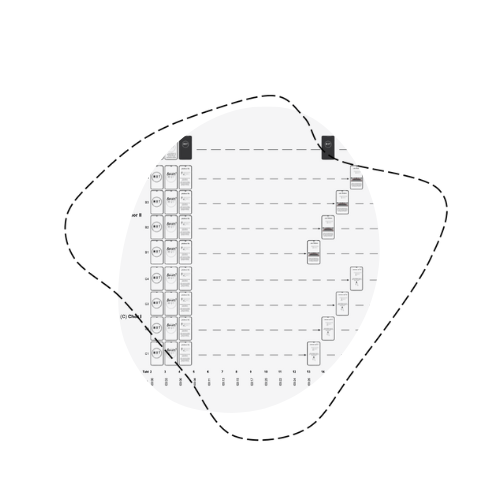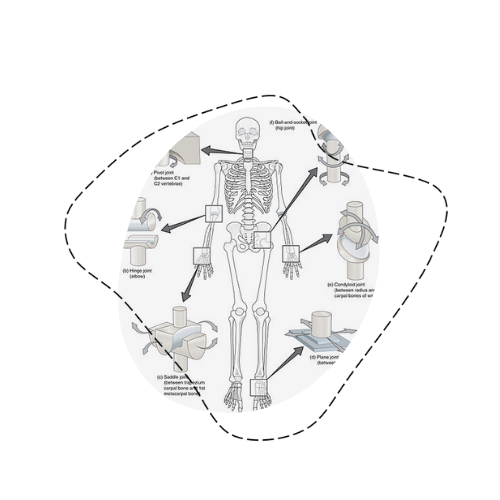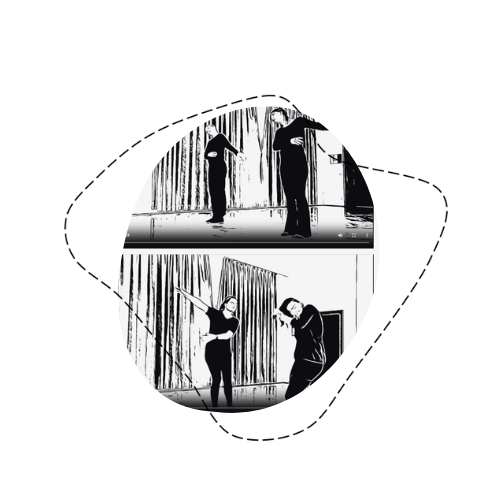This part of the website is still under construction. As the project progresses, it will host a cartographic account of the different notations used during the project.
Spherical dances
Score for dance quintet and movement choir
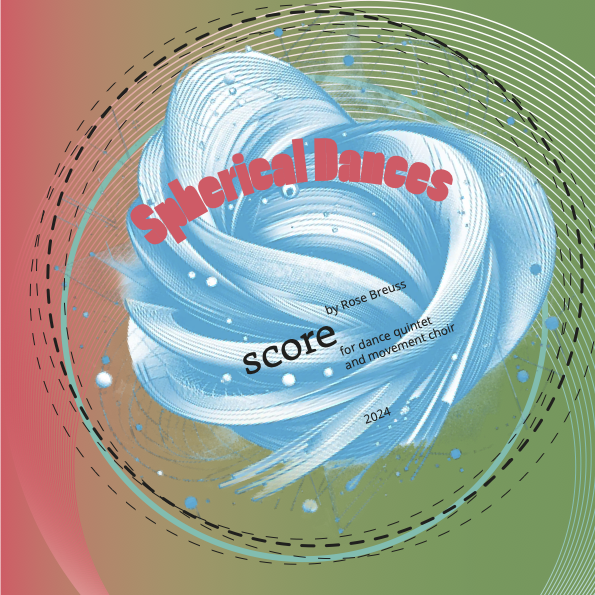
Spherical Dances configure dance movements by means of text, image and dance scores on the theme. They unfold from the processes of deciphering, scanning and incarnating this score. Movement is understood here as a broad spectrum of physical phenomena, impulses and mechanics, i.e. not only the mechanically visible movement of human limbs, but also inner movements such as breathing, changes in tension, perceptions, spatial references, contacts, touches, points in space and time. In re-actions to their view and their interpretation of the material, dancers invent movements and (temporal) spaces. Such thematically arranged re-action chains appear analogous to the dramaturgy of hope – a dramaturgy that seeks to shape and change re-action chains from the conditions of reality.
Persistent identifier: https://phaidra.bruckneruni.at/o:3798
SCORES | Zwischen Dokumentation, Vermittlung und Kreation
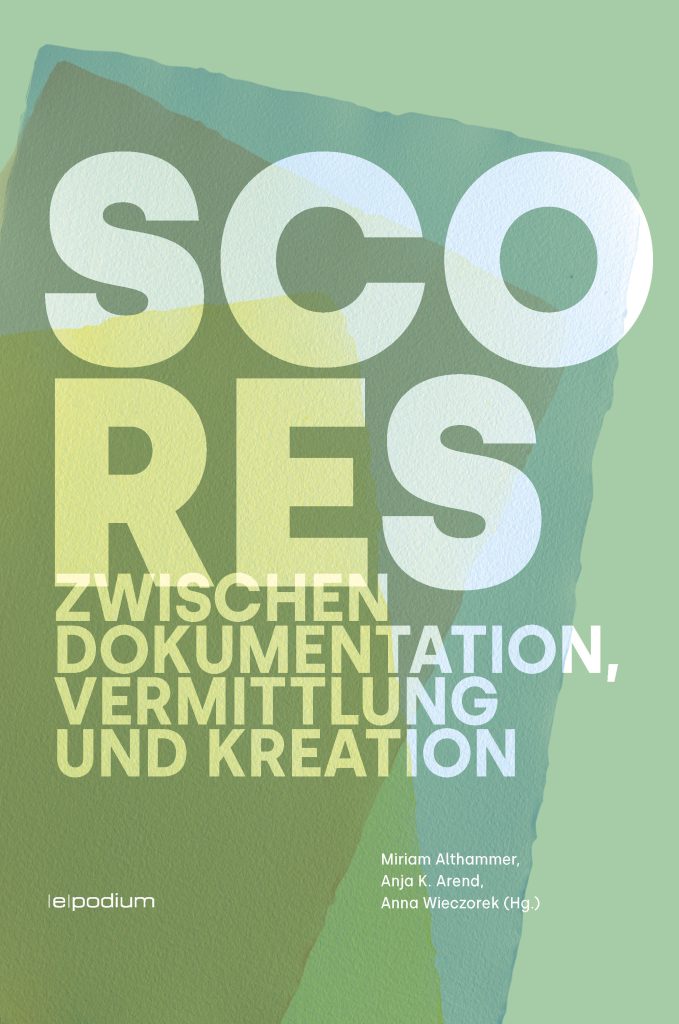
Scores sind derzeit in aller Munde. Choreografien und Performances basieren auf Scores, generieren und modifizieren sie. Auch die Tanzwissenschaft hat Scores als tanzspezifische Medien entdeckt. Dabei reicht das Verständnis eines Scores von der einzelnen, spontan entstandenen Linie auf einem Blatt Papier über komplexe Konzepte oder schriftliche Bewegungsanweisungen bis hin zu äußerst diffizilen (Zeichen-)Systemen.
by: Miriam Althammer / Anja K. Arend / Anna Wieczorek (Ed.)
Edited by: epodium
Who: Rose Breuss, Maria Shurkhal
Live Electronic notations
Callisthenic Songs
- Jaques-Dalcroze, Émile (EJD) (1915). Nouvelles Chansons avec gestes op.60. Lausanne: Jobin et Cie.
- Orff, Carl: Tanzlieder aus dem “Orff-Schulwerk” / Carl Orff, Gunild Keetman (1950–1954): Musik für Kinder. Bände 1–5. Schott Musik International.
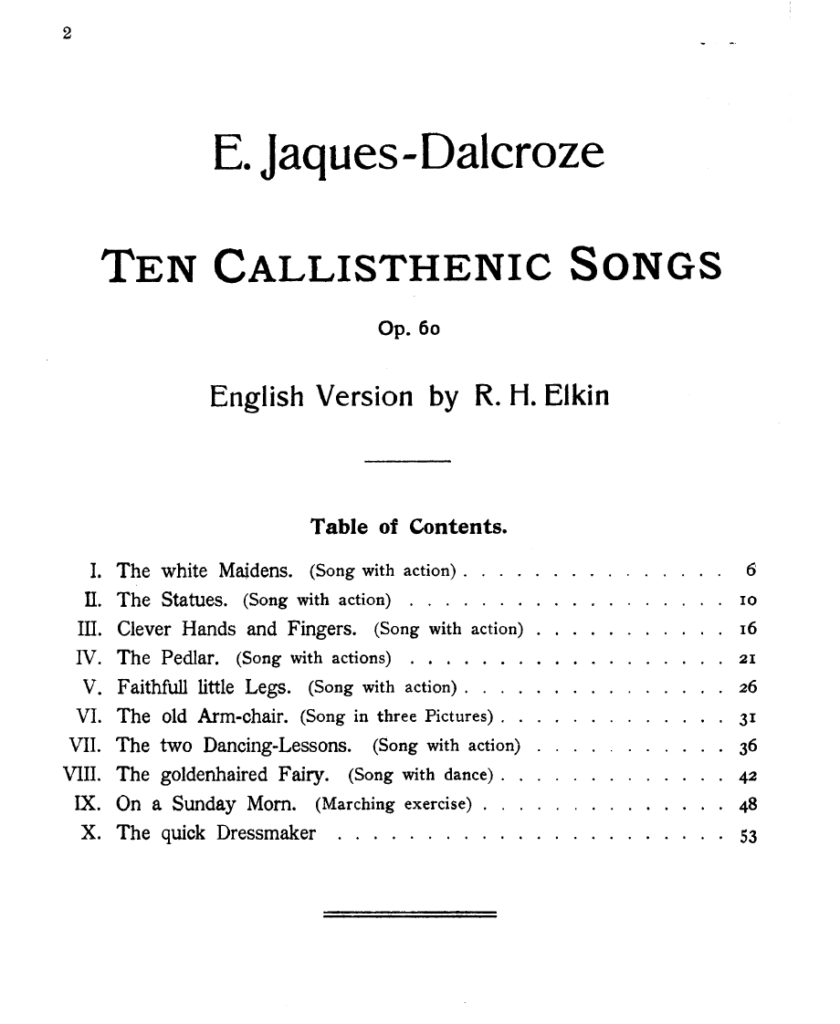
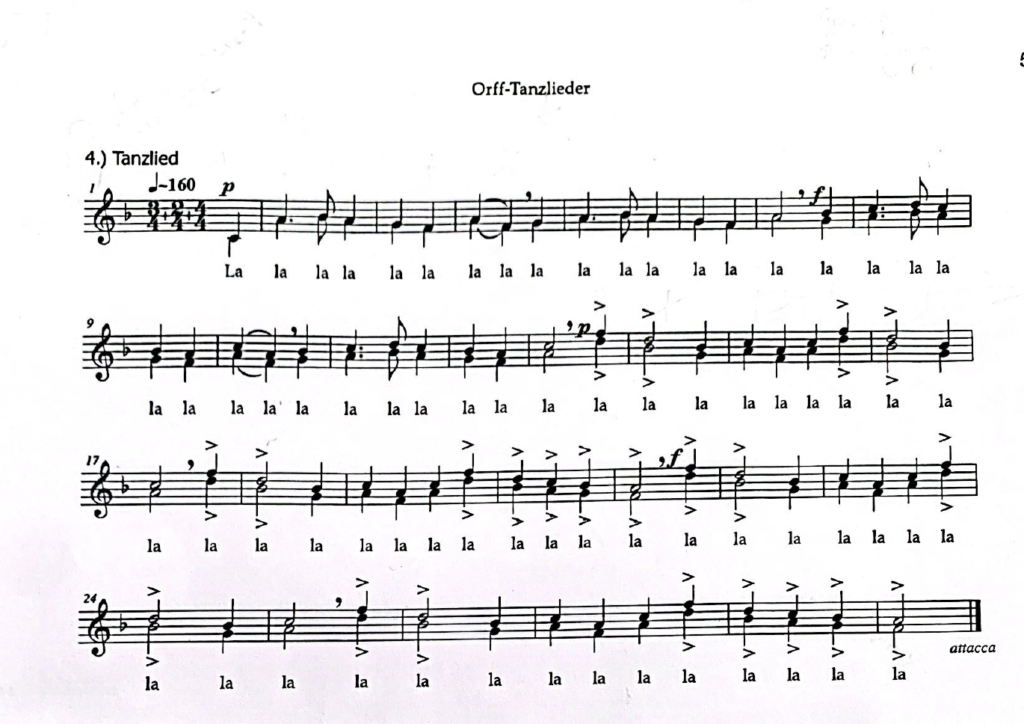
Notation: SixMemos
Notation: Mut, jede Stimme zählt
Desire Machine Lab Score
Application of the Assemlage Flow- Interaction Concept to a Dance Score.
Maria has tried to create a dance score that translates the concept of flow and interaction – the desiring machine into the movement. In order to do so, she addressed the anatomical categorisation of the movement range of the human joints:
The joins of the skeleton define the motion of the body and its limitations. Maria has developed a score based on the synovial joints and the type of movements and limitations they allow.
Image Source: Anatomy & Physiology, Connexions Web site. http://cnx.org/content/col11496/1.6/, Jun 19, 2013.

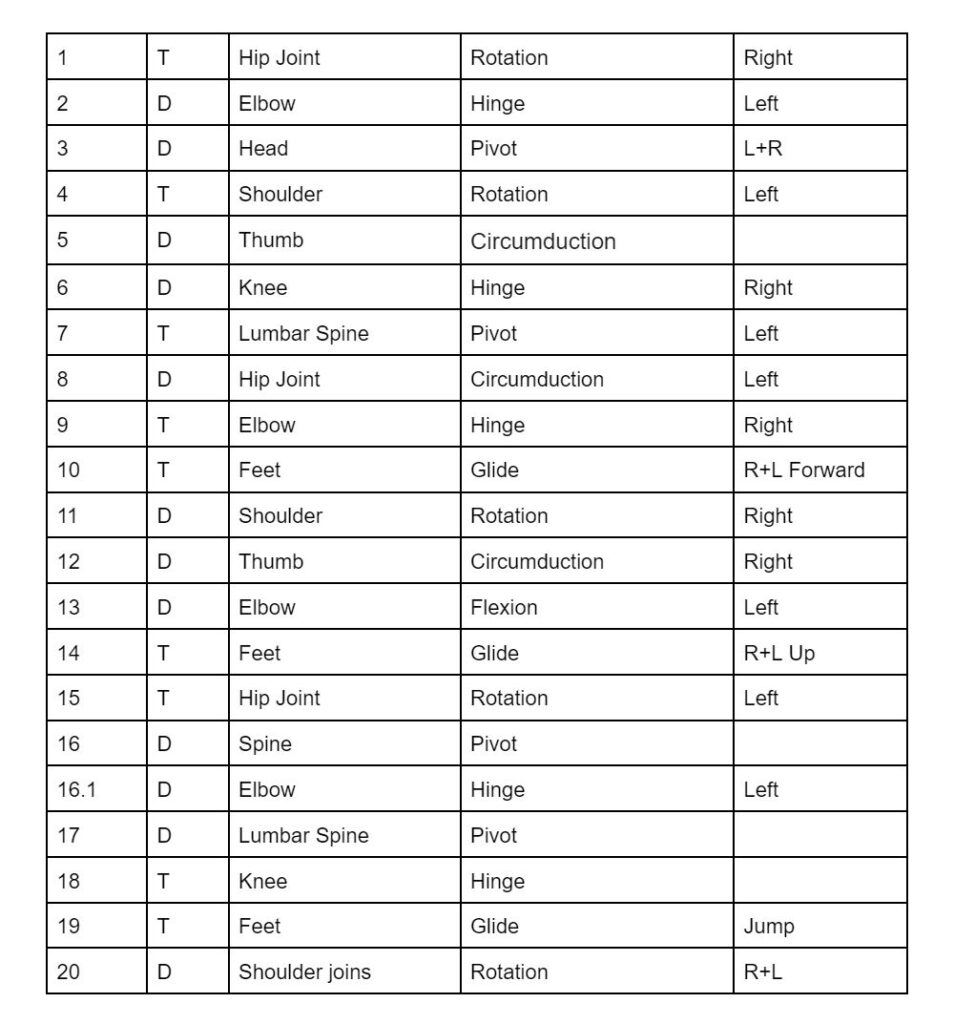
Outcomes
The score was developed in a frame of a residency at Schiede Hallein in September 2022. The work was presented in an experiemental format during the final showing of the residency and resieved positive feedback from the audience.
Null space experiment: double pendulum and a score by György Kúrtag
Leonhard Horstmeyer and Hanne Pilgrim conducted a workshop with eurhythmics students from Vienna and Stockholm as part of a “Learning, Teaching, Training Activity” in the Erasmus+ funded project “Eurhythmics in Education and Artistic Practice”.
Participants were ask to project the motif of a double pendulum as departure point for a movement composition “Tenyeres” from Játekók Vol.1 by György Kúrtag as musical departure point.
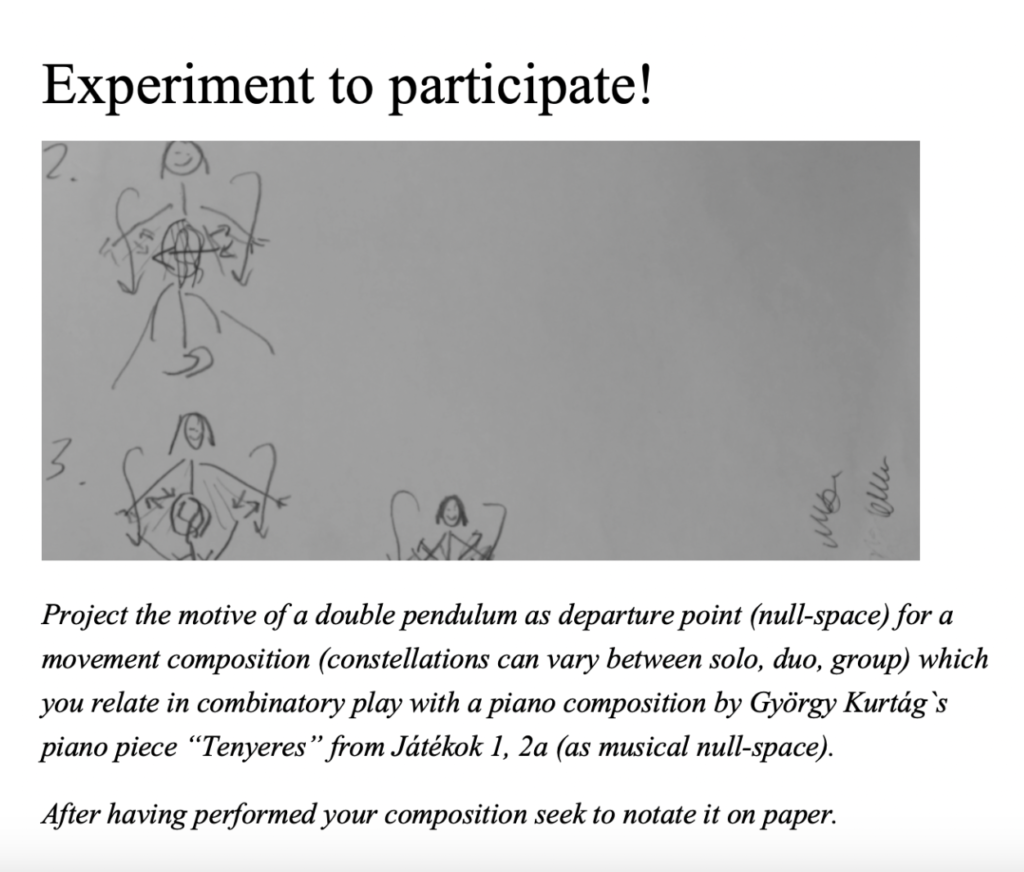
…
The output generated by the workshop participants can be found here
